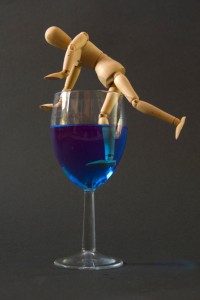 Models of Addiction, Part Four: Temperance, or “Demon Rum”
Models of Addiction, Part Four: Temperance, or “Demon Rum”
We’ve talked about how difficult it is to come up with a single effective approach to addictions, and that’s exemplified by the various models that exist. By examining the models through which people view addiction, it’s possible to gain better perspective on society’s reaction to a phenomenon that after all has been around for thousands of years.
Lots has been written about the long, slow rise and brief reign of the Temperance movement, but Ken Burns described it far better than I can.
One thing for certain: Prohibition was traumatic for America. Although technically it ended in December 1933, the experience can dominate the discussion about alcohol problems even today. That’s one point where we all agree: nobody wants to repeat that.
In the Temperance Model, alcoholic drinking is viewed as sinful. Why do alcoholics drink? Because they succumb to temptation. What’s the best way to prevent this? First, eliminate access to alcoholic beverages. Second, force those already addicted to pledge sobriety and start attending church.
Prognosis? Well, the Bible tells us that flesh is weak. Thus it becomes even more essential to keep the demon out of our hands in the first place.
Turns out that’s really difficult to do.
If it sounds archaic, that’s because it was. 19th Century concepts that somehow bled over into 20th Century policy-making. The idea was that the drinker would admit his sins, beg forgiveness, accept punishment, and promise to abstain from that point on. Some alcoholics did very well using that approach, but others failed time and again.
Wives and families were advised that it was their duty to save the drinker from himself, by pouring liquor down the drain and otherwise hounding him onto the path of righteousness. Same flaw: sometimes it worked, often it didn’t.
What did we learn from the failure of the Temperance movement? First, that alcoholic beverages had been around for centuries because people wanted to drink them. Not just alcoholics, but the rest of us.
Plus we realized that chronic drunkenness wasn’t so much about the drink as it was about the drinker. If we hoped to remedy the problem, we’d have to study the alcoholic much more closely.
Both valuable insights that shaped a new approach.
This article is Part Four in a series “Models of Alcoholism and Drug Addiction.” Further articles will explore other models.
Models of Alcoholism and Drug Addiction -More from this series:
- Models of Alcoholism and Drug Addiction
- Models of Addiction: The Medical Model
- Models of Addiction: The Psychoanalytic Model
- Models of Addiction: The Temperance Model
- Models of Addiction: The Moderation Model








